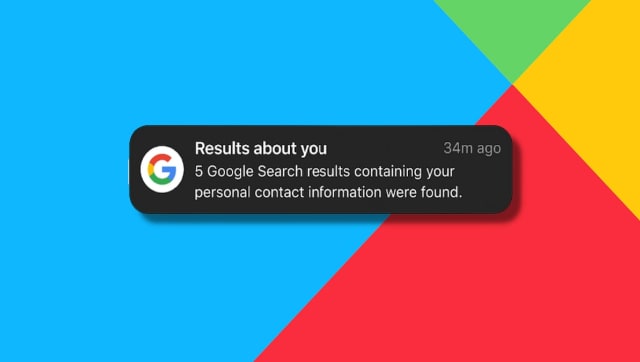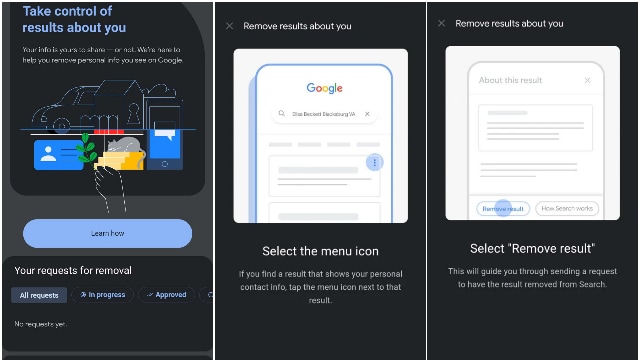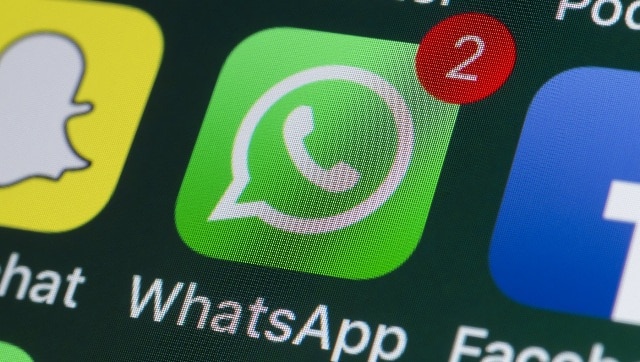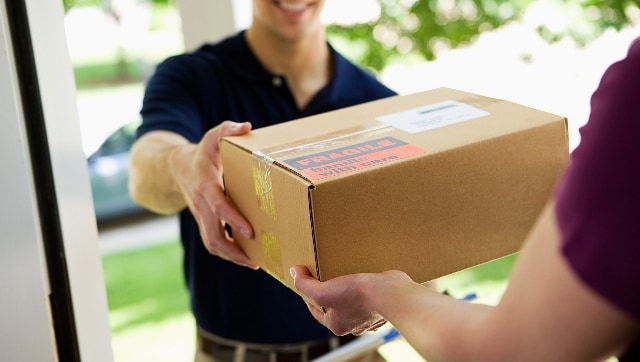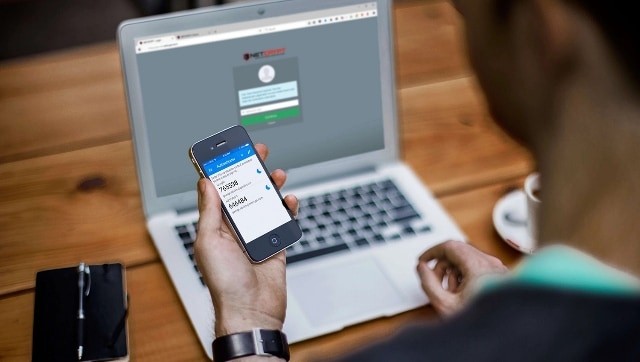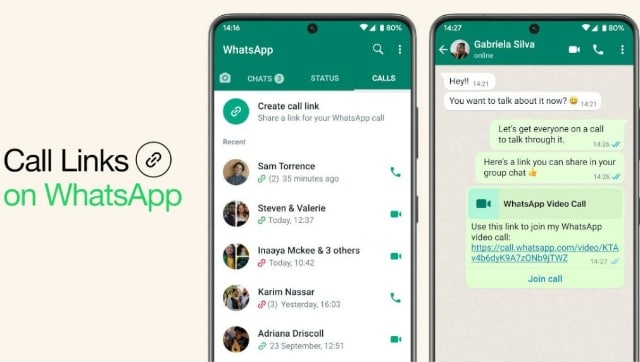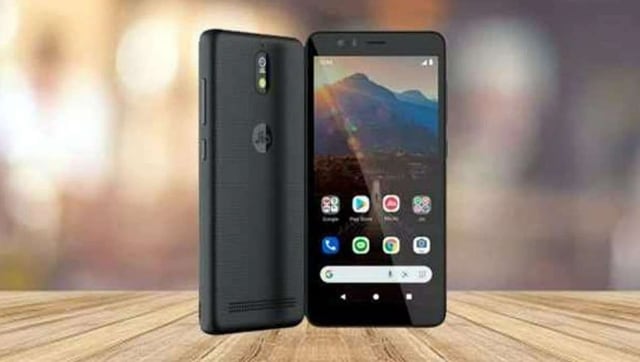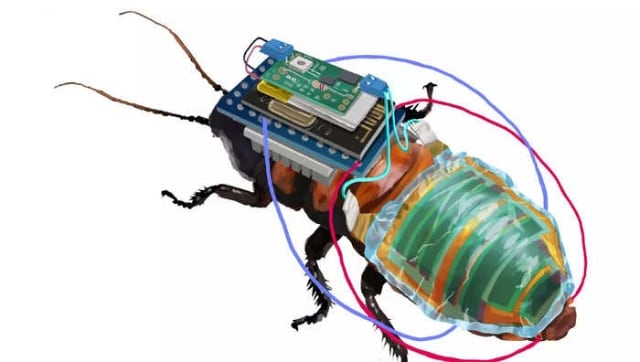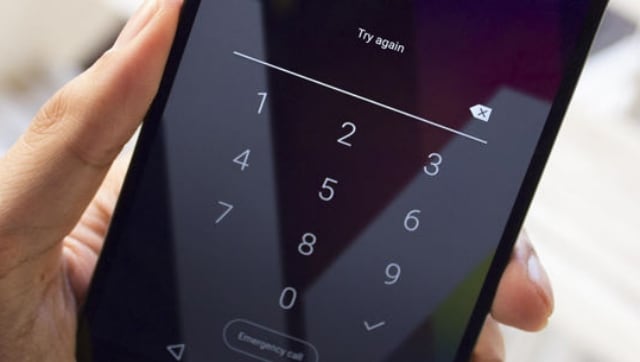All the professionals on the move, who need to carry their laptop with them, pray for one thing – for the laptop to be lighter, much lighter. And while at it, wouldn’t it be great if one didn’t have to sacrifice the sturdiness, the processing power or even the battery backup? Now I am pushing it, or am I? LG seems to have created their Gram series of laptops precisely to fulfil those wishes. We got our hands on the latest 14-inch variant from the series and would like to share our experience with you.

Design and connectivity
The LG Gram 14 laptop weighs just 999 grams. Yes, you read that right – 1 gram shy of a kilogram. Maybe that’s why it’s called Gram. Jokes apart, it has a simple yet elegant design and feels great to hold. At the same time, it does not feel delicate despite being fairly slim at 16.8 mm in thickness. To my surprise it also has a US MIL-STD 810H military-grade standard certification, having passed seven durability assessment tests. You wanted sturdiness? You got sturdiness, and some more.
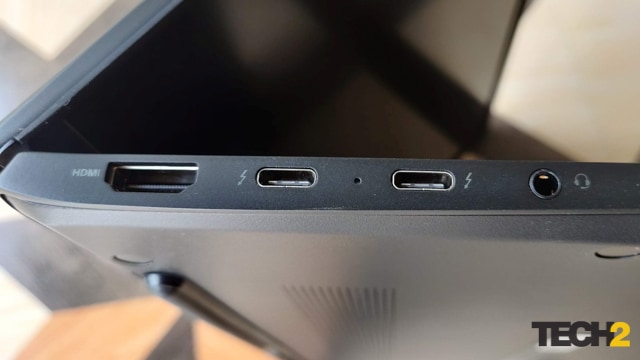
The keyboard layout is standard for a 14-inch laptop and there’s a sizable touchpad too. The backlit keys have just the right keypress; no complaints there. In terms of connectivity, you have most of the bases covered. You get a 3.5 mm jack for connecting wired headphones or a headset, along with an HDMI port and a card reader.

There are two USB 3.2 Type-A ports on one side and two Type-C Thunderbolt 4 ports on the other side with multiple interface support including charging and display. Wireless connectivity options include dual-band Wi-Fi with support for up to 6E standard and Bluetooth 5.1. That should take care of your classic and modern connectivity needs.
Display
As the model number suggests, the LG Gram 14 has a 14-inch screen with an IPS panel and a WUXGA resolution of 1920 x 1200 pixels (16:10 aspect ratio). It supports a peak brightness of 350 nits, 1200:1 contrast ratio and 99% DCI-P3 coverage. The colour reproduction is impressive and so is the contrast. The anti-glare coating does help in keeping reflection and glare at bay. However, the viewing angles aren’t the best I have come across on IPS screens. Having said that, it shouldn’t matter much for a laptop.
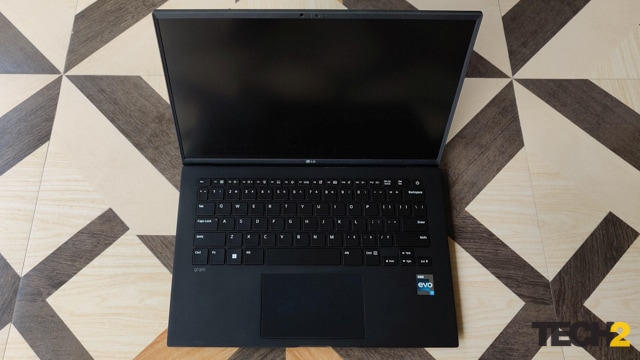
Incidentally, it has some very interesting screen-related privacy features. It can be set to automatically lock or turn off the screen when you move away from the laptop, or simply blur the screen when you look away. But the best of the lot is it pops a warning or blurs the screen when someone else stares at it from over your shoulder. Don’t you hate it when people do that without your consent?
Hardware, storage and performance
The LG Gram 14 is powered by a 12th generation Intel Evo Core i7-1260P processor and accompanied by 16 GB of LPDDR5 dual-channel RAM clocked at 5200 MHz. Storage is handled by a 512 GB M.2 NVMe SSD that is sufficiently fast. The entire setup is quite powerful for most of the tasks you would want to use this laptop for barring gaming.
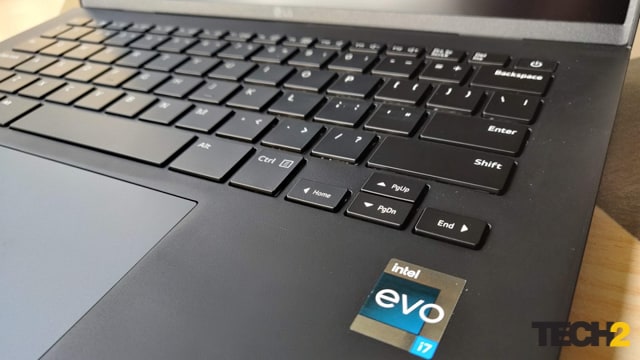
The Intel Iris Xe graphics chip is just not powerful enough for any meaningful gaming. Yes, it can handle some casual games or certain decade-old games reasonably well, but not the new ones. When it comes to productivity apps or media consumption, it sails through without a hiccup. Be it opening 50 tabs in a browser or editing images or streaming content, the LG Gram 14 could handle all of it with ease.
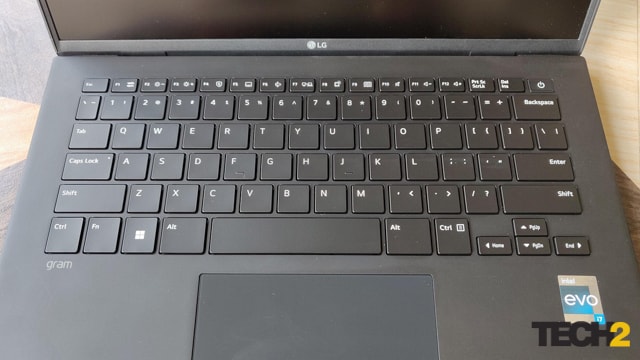
It is quite handy for entertainment too with a pair of 1.5 Watts speakers placed underneath providing a clean stereo sound, and DTS:X Ultra compliance lends some more depth to the audio. Ironically, they sound better when you place this laptop on a table or a desk rather than on your lap. The Full HD video camera is pretty good and offers some cool tricks.
Software and battery backup
This laptop runs Microsoft Windows 11 Home and you get a 30 days trial version of Office 365. LG also bundles a handful of its in-house tools to accomplish various tasks. The LG Gram 14 is fitted with a 72 Wh Lithium Ion battery and a 65 Watts USB-C PD power adapter is bundled along, which incidentally feels on the heavier side. But if your workload is not too heavy, you may not even need to carry it around.
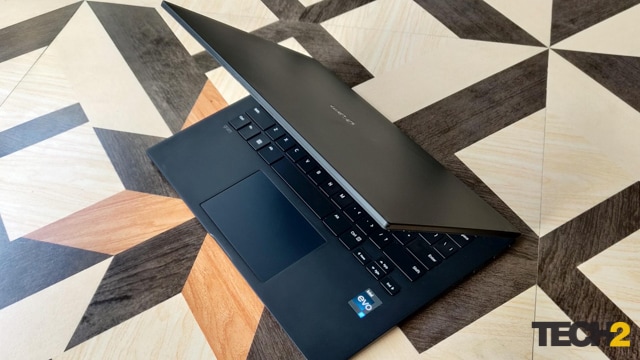
LG claims a very ambitious battery life figure of 23.5 hours on a full charge. Of course, that is under ‘test conditions’ which include brightness lower than half, no wireless connectivity and when not using the laptop speakers for sound. Realistically under normal load and without gaming, the laptop battery does last you for a full working day (8 to 10 hours) comfortably, which is quite impressive. But your mileage may vary depending on what you use this laptop for. The standby time is pretty good too with not too much battery drain after I left it in sleep mode for a full day.

Price and final thoughts
The LG Gram 14 (14Z90Q-G.AH75A2) laptop is priced at Rs 1,05,999 with a 3 years onsite warranty, and can often be spotted for Rs 6,000 less. Weighs a gram under a KG and sells for a Rupee under a lakh – something poetic about it, no? Yes, it is expensive but does offer a bunch of unique elements, and it’s hard to spot something similar for much lower. This laptop is a perfect blend of portability, sturdiness, power and battery backup if you are looking for all of that in one device. But if gaming is high on your wishlist, look elsewhere.
from Firstpost Tech Latest News https://ift.tt/yoHbNhT

